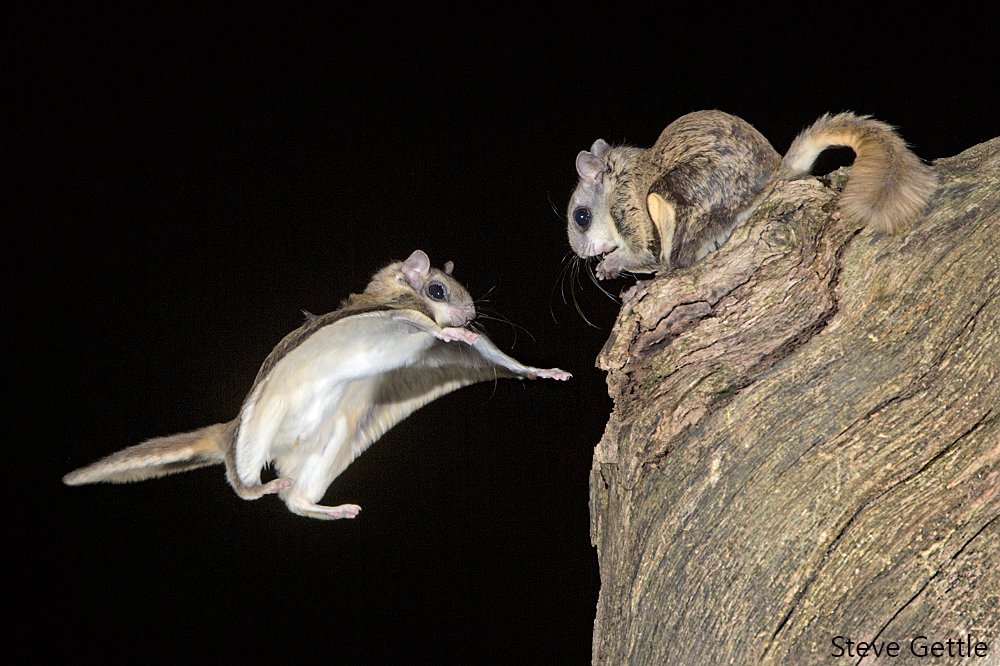Southern Flying Squirrel (Glaucomys volans)
Flying Squirrel - Photo by Steve Gettle
The smallest tree squirrel in North America, this species measures 9-10” (including a 4” tail) and weighs just 2-4 ounces. They are common in suburban areas but are rarely seen because of their nocturnal and arboreal nature. They have large eyes and a brownish-gray body with white bellies. They are easy to tell from other squirrels because of the flaps of skin stretching between their front and back legs. This membrane (called a patagium) is attached from extendable cartilage at their wrists and allows them to glide up to 100 yards at a time. Flying squirrels also have tails, but do not, contrary to popular belief, use them to steer. Rather, they bank, pulling up the patagium from one side or another to make dramatic and accurate maneuvers. An individual can even make a complete turn and end back where it started.
Here is a surprising Fun Fact about Flying squirrels: they are fluorescent! In ultraviolet light, they glow hot pink. Recently it’s been discovered that lots of other mammal species also glow fluorescent colors in UV light.
| What Flying Squirrels Need | How Can We Help |
|---|---|
| Food and Water: This is the most predatory of our squirrel species, eating many insects, occasional small animals and perhaps even bird eggs. The diet also includes berries, fruit, seeds and fungi. In winter their main food source is nuts, particularly hickory. A nearby water source is essential. |
|
| Shelter: Flying squirrels use holes in both live trees and snags. Leaf nests (drays) are constructed (much like Gray squirrels) if no cavities are available. Stands of deciduous trees that provide a mixture of cavities and leafy branches are essential for shelter from weather and predators. |
|
| Breeding: Females use holes in trees and snags (standing dead trees) as breeding dens. Individual squirrels have up to two litters apiece, the first in late March or early April, the second in late June or July. Fall litters are uncommon. After about 40 days of gestation, two to seven (three on average) young are born. |
|
| Other Threats: Most important threats are lack of dens and natural foods, and predation, especially by outdoor cats and owls. |
|
Additional Resources:
Learn more about flying squirrels and see them up close by attending one of the nighttime programs offered by local nature centers, such as Hidden Oaks Nature Center in Fairfax and Long Branch Nature Center in Arlington
You may have flying squirrels in your habitat and not even know it. Listen for their voices and look for their characteristic chewed hickory nuts.
Wildlife Rescue Assistance: If you find an injured or ensnared snake or want to relocate a poisonous snake away from your property you can get help through the Wildlife Rescue League





